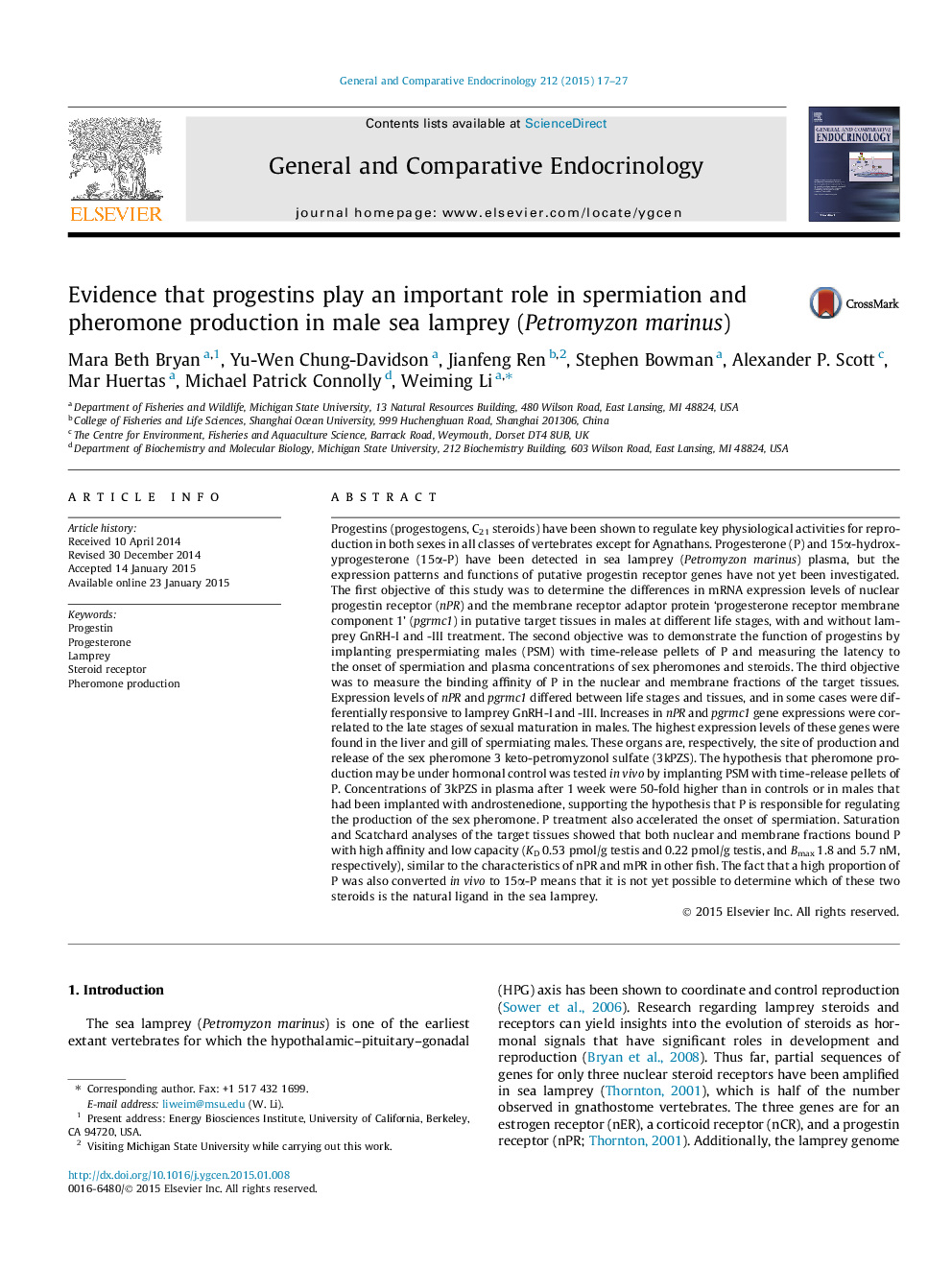| کد مقاله | کد نشریه | سال انتشار | مقاله انگلیسی | نسخه تمام متن |
|---|---|---|---|---|
| 2800032 | 1568893 | 2015 | 11 صفحه PDF | دانلود رایگان |

• Differential expression of PGRMC1 and nPR in target tissues at different life stage.
• Differential response of PGRMC1 and nPR to lGnRH-I and -III.
• P (or 15α-P) regulates the production of male sex pheromone in sea lamprey.
• Increases in nPR and PGRMC1 gene expressions correlate with the late stages of sexual maturation in male sea lamprey.
• Progesterone accelerates the onset of spermiation in sea lamprey.
Progestins (progestogens, C21 steroids) have been shown to regulate key physiological activities for reproduction in both sexes in all classes of vertebrates except for Agnathans. Progesterone (P) and 15α-hydroxyprogesterone (15α-P) have been detected in sea lamprey (Petromyzon marinus) plasma, but the expression patterns and functions of putative progestin receptor genes have not yet been investigated. The first objective of this study was to determine the differences in mRNA expression levels of nuclear progestin receptor (nPR) and the membrane receptor adaptor protein ‘progesterone receptor membrane component 1’ (pgrmc1) in putative target tissues in males at different life stages, with and without lamprey GnRH-I and -III treatment. The second objective was to demonstrate the function of progestins by implanting prespermiating males (PSM) with time-release pellets of P and measuring the latency to the onset of spermiation and plasma concentrations of sex pheromones and steroids. The third objective was to measure the binding affinity of P in the nuclear and membrane fractions of the target tissues. Expression levels of nPR and pgrmc1 differed between life stages and tissues, and in some cases were differentially responsive to lamprey GnRH-I and -III. Increases in nPR and pgrmc1 gene expressions were correlated to the late stages of sexual maturation in males. The highest expression levels of these genes were found in the liver and gill of spermiating males. These organs are, respectively, the site of production and release of the sex pheromone 3 keto-petromyzonol sulfate (3kPZS). The hypothesis that pheromone production may be under hormonal control was tested in vivo by implanting PSM with time-release pellets of P. Concentrations of 3kPZS in plasma after 1 week were 50-fold higher than in controls or in males that had been implanted with androstenedione, supporting the hypothesis that P is responsible for regulating the production of the sex pheromone. P treatment also accelerated the onset of spermiation. Saturation and Scatchard analyses of the target tissues showed that both nuclear and membrane fractions bound P with high affinity and low capacity (KD 0.53 pmol/g testis and 0.22 pmol/g testis, and Bmax 1.8 and 5.7 nM, respectively), similar to the characteristics of nPR and mPR in other fish. The fact that a high proportion of P was also converted in vivo to 15α-P means that it is not yet possible to determine which of these two steroids is the natural ligand in the sea lamprey.
Journal: General and Comparative Endocrinology - Volume 212, 1 February 2015, Pages 17–27